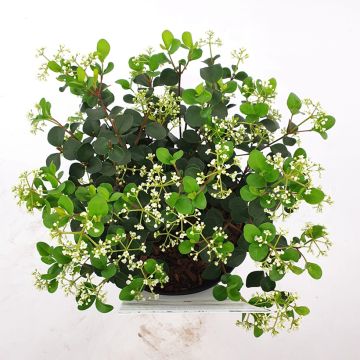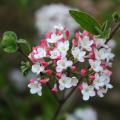Laurustinus - Laurestine
Would this plant suit my garden? Set up your Plantfit profile →
Available in 3 sizes
Available in 2 sizes
Available in 2 sizes
Available in 2 sizes
Available in 3 sizes
Available in 1 sizes
Available in 1 sizes
Available in 1 sizes
Available in 1 sizes
Available in 1 sizes
Our range of Laurestine, in Latin Viburnum tinus. This Viburnum is an excellent evergreen bush for hedges, very dense, robust and truly undemanding, also appreciated for its autumn to winter flowering, white to pink, slightly fragrant, and honey-producing. The species is native to the Mediterranean basin. This bush forms a beautiful rounded mass of about 3 m (10ft) in height and has oval, leathery, dark green leaves. Laurestine comes in dwarf varieties such as Viburnum tinus 'Gwenlian', more suitable for container cultivation and small gardens. Reaching 1.50 m (5ft) in all directions, particularly floriferous, the shrub is covered in winter with cheerful dark pink buds opening into white florets. Some selections offer pink flowers, like 'Lisarose', which is a little taller. Viburnum 'Variegatum' is a beautiful variegated form with leaves bordered in cream to white, very bright, a little shorter than the classic Viburnus tinus.
The Laurestine is rather cold-resistant (down to -15 °C / 5°F for short periods for an adult plant). The shrub adapts to a wide range of soils and withstands summer drought very well. Its metallic blue fruits are eaten by birds who 'sow' the plant under trees that they perch on. It is typically an undergrowth bush that tolerates the root competition of other trees. Many birds like to nest in its vegetation, which offers them shelter and cover.
Haven't found what you were looking for?
























































